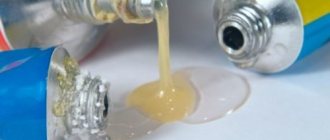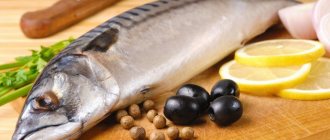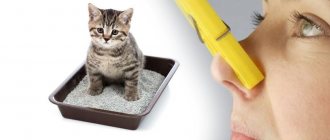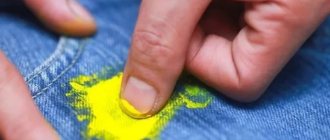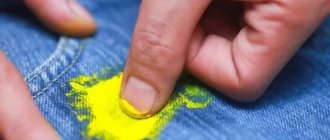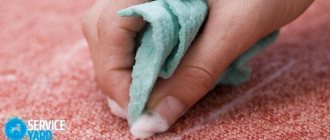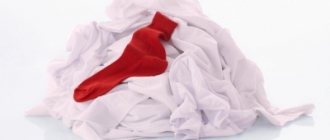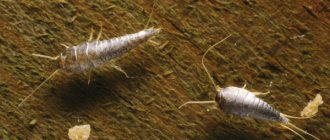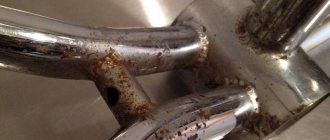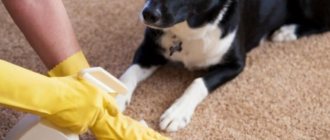How to remove stains from clothes at home: general recommendations
It is very easy to ruin clothes with stains, but it is much more difficult to get rid of them, especially at home. What can you do to remove stains of various origins from clothing and other fabric products? First of all, you should have the following chemicals at your disposal: turpentine, acetone, gasoline, denatured alcohol, ammonia, hydrogen peroxide, glycerin, soda, oxalic acetic and citric acid, chalk, tooth powder and, of course, laundry detergent.
When removing stains, a hyposulfite solution is widely used : half a teaspoon of hyposulfite per 1 glass of water. The cleaned area should then be washed with warm boiled water. After removing the stains, you need to hang things out to dry and air and keep them in the sun for a couple of hours.
To remove stains as effectively as possible, stretch the stained area of fabric over a glass or cup, dip a cotton swab or clean cloth into the cleaning solution or mass, and rub gently - haste does not lead to good.
Before removing stains from clothing and other fabrics, determine the nature of the contamination. All spots are divided into several groups. In their origin, they can be fatty and oily (appear from unsuccessful handling of fat, all kinds of oils, resins, etc.), colored - mainly of organic origin (wine, berries and fruits, tea, coffee and cocoa, mold , blood and ink), as well as mold and rust stains. Everyone needs to find their own approach.
So that a greasy stain on fabrics such as wool, tights, gabardine, and crepe of all colors does not spread when removed, its borders should be covered with wet cotton wool, potato flour or white clay. That is, the spot falls into a dense environment.
The streaks that formed on the dress from which you removed the stain will disappear, or at least decrease, if you hold it a little over the steam.
Products made from artificial silk fabrics should never be cleaned immediately, without preliminary tests, with agents such as acetone, hydrogen peroxide, oxalic, acetic and citric acids. It is not recommended to use stain removers such as alcohol, gasoline and acetone on artificial leather products. They are washed only with warm soapy water.
Very often, the quality and speed of stain removal depend on the age of the stain. The older the stain, the more difficult it is to fight it. This is because clothing contaminants undergo profound chemical changes when exposed to sunlight and oxygen in the air. You can try to remove old stains with heated lemon juice, holding the cloth over the steam.
To remove old stains at home, you can use lemon juice diluted in half with water or denatured alcohol. Then you need to wipe the fabric with a cloth soaked in a solution of water and ammonia.
Having familiarized yourself with the general recommendations on how and with what you can remove stains at home, it’s time to learn about methods for each specific type of stain.
And remember: precaution comes first. In this case, it is a guarantee of success. Before removing the stain, you should check the color fastness of the fabric to the selected composition. You never know. To avoid misunderstandings, check its effect in an inconspicuous place: somewhere near the seam or on the hem. Watch carefully to see if the color of the fabric has changed.
Next, you will learn how to remove wine and beer stains.
Tough stains
If untidy marks on clothes are discovered late, it will be much more difficult to wash them and you will have to put in more effort. Such contaminants are called difficult to remove. Sometimes you have to use strong bleaches to eliminate them, and in some cases only proven folk remedies help, because you don’t want to throw away your favorite things.
There are several types of stains that are very difficult to wash off. This category includes stains from:
- sweat;
- food;
- herbs;
- cosmetics;
- paints;
- blood.
Difficult to remove food stains can be divided into several categories. These are untidy blots from vegetables or fruits, drinks, fatty meat dishes. This also includes any derivative products:
- coffee;
- wine;
- sauce;
- jam;
- ketchup;
- jam;
- juice.
Food stains are easily removed at the very beginning. The more time passes from the moment they appear, the more difficult it will be to clean things up. Before choosing a method to eliminate the problem, you need to determine the type of fabric, the type of stain and the period during which the stains remained on the clothing. After studying the product label, it will be clear what types of processing are acceptable.
- Indexation of benefits for veterans and disabled people from February 1, 2019
- Can Vitamin D Deficiency Cause Your Hair Loss?
- What will change in the lives of Russians from January 1, 2022
How to quickly remove wine and beer stains from clothes
Before learning how to remove wine stains from clothes, take a short excursion into the nature of such stains. The fact is that the color of the stains left by berries and wine depends on coloring substances called anthocyanins. Anthocyanins are close to the colorless catechins that accompany them in plants. Under the influence of certain chemicals, anthocyanins can turn into catechins - in other words, turn into uncolored substances. This transformation occurs, for example, under the influence of reducing agents - sodium drosulfite or ethyl alcohol. They should be used to remove such stains.
Fresh stains from red wine (or fruit) should be covered with salt and washed with soap and water or wiped with a 5% solution of ammonia. Then, of course, rinse the product. Stains from white wine and champagne are usually removed with glycerin heated to 40-50 ° C, then washed with warm water.
Wine and beer stains can be removed from cotton fabric if you don't mind rubbing a lemon on the stained areas. Then keep the tablecloth in the sun for a while and rinse. Beer stains can also be removed with warm ammonia, and then the product is washed in warm water with yawl.
Wine stains will disappear if you wash them thoroughly in warm milk. Then take a small contrast shower: rinse alternately in cold and hot water.
The next section of the article is devoted to how to remove stains from tea, coffee and chocolate.
How to remove coffee, tea and chocolate stains
Tea stains are removed with a mixture of glycerin and ammonia (4 parts glycerin and 1 part ammonia). It is better to remove old tea stains with a solution of oxalic acid (1/2 tsp per 1 glass of water) or a hyposulfite solution (1 tsp per 1/2 l of water). Then the item must be washed in soapy water, adding 2 tsp for each liter of water. ammonia, and rinse well.
Tea stains from white fabric are removed with hydrogen peroxide or lemon juice, after which the item should be washed and rinsed in warm water.
But removing stains from coffee and cocoa is very simple - ammonia, half diluted with water. And the effect will be especially good if you first wipe them with gasoline. Your thin silk blouses can be saved if you moisten the stains with heated glycerin and leave for 5-10 minutes, then rinse in warm boiled water. You can wash the item in warm salt water and rinse in cold water. Coffee stains can be completely removed with hydrogen peroxide.
And one more way to remove such stains from clothes: moisten the fabric with a mixture of equal parts of glycerin, ammonia and water and leave overnight, and rinse in the morning. If a streak forms around the stain, rinse the area with hot water.
The easiest way to remove chocolate stains at home is with boiling soapy water; they will disappear after washing in highly salted water or a solution of ammonia.
Below is a description of how you can remove stains from other food products.
Where to begin?
The list of potential sources of contamination of clothing and textiles contains hundreds of items. In any case, you need to treat things at home as quickly as possible so that foreign substances do not penetrate deep into the tissue. Fresh stains are much easier to remove than old ones.
Procedure:
- Clothes that can be washed should be soaked in warm water.
- Blood is an exception; cold water is used here, otherwise the protein will coagulate and bind even more tightly to the tissue.
- In most cases, it is enough to wash the soiled item with a strong detergent.
- This method does not work against stubborn stains. You will need to use a product with a whitening effect.
- In addition to or instead of store-bought stain removers, use home remedies to remove stubborn stains.
It is imperative to find out what fibers are included in the fabric. This is important for color preservation when using oxygen or hypochlorite bleaches. The first should not be used for wool and silk. Manufacturers indicate the composition of the fabric and recommendations for washing and caring for clothes on the label.
The selected stain remover should be tested on an inconspicuous place on the product before treatment. You can rub the inside seam to see how the fabric reacts. If the color does not change, then you can use it.
The difficulty of removing some contaminants is explained by the fact that foreign substances, after drying, are firmly connected to the fabric. You should never rub too hard, otherwise the fibers will become rough. Foreign substances “eat” even deeper into the material, changing its color and structure.
The best traditional methods for removing food stains
Stains from fruits and fruit juices can be easily removed using a solution of glycerin and vodka (in equal parts). You can hold the cloth over a kettle of boiling water and rub the stain with vinegar.
Fresh stains from apples, raspberries, cherries and fruit juice can be washed off with a swab moistened with soapy water or a mixture of equal parts vinegar and lemon juice. Then you should wash the product.
Milk and ice cream stains are removed with a mixture of equal parts of glycerin, ammonia and warm water. Use this mixture to wipe the stain, then wash the item in warm water. Milk stains disappear when washed in cool soapy water or in water with the addition of borax or ammonia.
Egg stains on clothes are inevitable. A fresh egg stain on silk and cotton fabric can be removed by washing it in cold water, then rubbing it with a cotton swab dipped in a weak solution of vinegar, and then washing the item in warm water.
Egg stains disappear quickly when washed with synthetic detergents that contain enzymes. In addition, stains can be removed by lubricating the contaminated area with heated glycerin. After 15-20 minutes, wipe the stain with a rag soaked in glycerin, then wash the product thoroughly.
The most basic way to remove egg stains from clothes is to let them dry and then scrub them with a soft brush. True, it does not always work. Remaining traces of eggs can be wiped off with a napkin soaked in gasoline.
The egg yolk itself can be used to remove tobacco stains. Rub the stain with yolk mixed with denatured alcohol. Then rinse first in warm, then in hot water.
Vegetable oil stains can be easily removed with kerosene. The removal procedure is somewhat standard: use a cloth soaked in kerosene to gently rub the stained area and then wash the item in warm water and soap.
Stains from fish, canned food and soup can be removed with a solution of 1 tsp. glycerin, 1/2 tsp. ammonia and 1 tsp. water. Such stains can be removed from products made of natural and artificial silk with the same mixture, with the difference that instead of water, 1 tsp is added. vodka.
Fish oil stains can be removed with a weak vinegar solution.
Removing cosmetic stains
Stains from perfume and cologne on silk and woolen clothes are moistened with wine alcohol or pure glycerin, then wiped with a cotton swab soaked in sulfur or acetone. And the same stains on white fabrics are moistened first with ammonia, then with a hyposulfite solution (a pinch of hyposulfite per 1 glass of water) and after 2-3 minutes with a solution of oxalic acid (a pinch per 1 glass of water).
Lipstick, which young women love to wear, does not look as cute on a dress or on a husband’s shirt as it does on the lips. Lipstick stains on silk and wool can be easily removed with pure alcohol. You can also remove such stains from clothes at home by pouring borax onto the stain and gently scrub it off along with the lipstick, then wash the fabric in soapy water and rinse.
What to do if you get a stain on your clothes while dyeing your hair? We remove it with hydrogen peroxide mixed with an equal amount of ammonia, or with a hyposulfite solution (at the rate of 1 teaspoon per 1 glass of water). The solution must be heated to 60 °C and wipe the stain with a cotton swab dipped in it. Then wash the item in warm soapy water.
For particularly stubborn stains, use more aggressive agents
Acetone, trichlorethylene, gasoline dissolve the resin. Benzene, toluene, acetone, turpentine get rid of contaminants containing oil and grease. Moisten a cotton swab with liquid and wipe the stain thoroughly.
Organic solvents often leave a so-called halo on fabric. In order to avoid its appearance, place several layers of cotton wool or gauze under the place on the clothing where the contamination is located.
An important condition for completely removing stains is recognizing the substances of which they are composed. It is also necessary to know what material the contaminated item is made of. It is advisable to first test the selected product on the inner seam or hem of the garment. We must act with extreme caution. If the fabrics are delicate, then it is better to entrust the fight against stubborn stains to professionals.
Removing yellow stains from sweat and grass from fabric
The next problem is that we sweat. Sweat causes stains. Fresh stains disappear if you add ammonia to warm soapy water when washing (1 teaspoon per 1 liter of water). To remove sweat stains, you can wipe them with a mixture of vodka and ammonia.
Sweat stains can be removed from a woolen product with a cloth soaked in a strong solution of table salt, and from cotton - with wine vinegar. Removing yellow stains from sweat from silk fabric is possible with pure alcohol at the rate of 1 tbsp. l. vinegar to 1 glass of water.
But just a dirty stain should not be cleaned off immediately when it is still wet. It is better to wait until it dries, and then it can be easily cleaned with a weak solution of borax, then wipe with a dry cloth, rinse in warm water and iron through a damp cloth moistened with a weak solution of ammonia.
A fresh grass stain can be removed with vodka, preferably denatured alcohol, or, as a last resort, cologne, that is, something containing alcohol. A folk remedy is a solution of table salt (1 teaspoon per 0.5 cup of warm water). After removing the stain, rinse the fabric in warm water. Old stains are removed with a mixture of 10 g of ammonia and 30 g of cologne.
An effective way to remove grass stains from white fabrics is to use a 3% solution of hydrogen peroxide with a small addition of ammonia.
How to remove fresh dirt?
When a stain has just appeared, it is important to try to eliminate it as quickly as possible. The more time passes from the moment the grease gets on the fabric, the more difficult it will be to clean.
In a few hours, the fat has time to be deeply absorbed into the fibers, so it is necessary to act quickly. The main task is to localize the site of contamination and prevent fat from penetrating deeply into the structure of the material.
In this case , improvised means that are good sorbents will help:
- rock salt,
- starch,
- talc,
- chalk.
Any of the products is poured onto the stain and distributed by rubbing in a circular motion. As the fat is absorbed, the powder is shaken off the T-shirt and a new one is added.
You can also use dishwashing gel . It is applied from the package directly to the stain and carefully distributed. Leave it in this form for 15-30 minutes, after which the T-shirt is washed.
It is not advisable to use colored dish gels, especially on a white T-shirt, as they can leave behind colored stains.
Removing mold from clothes
It would be nice to learn how to properly handle and store things so that you have to deal with stains of natural origin. Improper care of things can lead to the appearance of mold and rust on things. This is extremely undesirable, but if things are stored in damp conditions, air access to them is limited, or you do something else wrong, then troubles are inevitable.
If mold appears on clothes made of cotton fabric, you need to sprinkle the stains with a layer of crushed dry chalk, put blotting paper on top and run a warm iron several times. The mold dies.
Mold on silk and woolen fabrics is removed with turpentine, then covered with a thin layer of dry clay, blotting paper is placed on top and ironed with a warm iron.
To remove mildew from white fabric, soak the stain with hydrogen peroxide, then wash the item and rinse in warm water. Wash white cotton fabric in milk, rinse in warm water and dry in the sun.
And on colored and dyed fabrics, the mold stain should be moistened with ammonia. Just be sure to check whether the color of the fabric is resistant to it.
Fresh mold stains can be removed by rubbing them several times with onion juice or curdled milk whey. After this, you need to wash the product in hot water.
Next, you will learn how to remove rust and blood stains.
Faded clothes
As a result of improper washing, faded stains appear on clothes. Do not rush to immediately throw away the damaged item. Try to remove them with one liter of hot water and two large spoons of ammonia. To do this, you need to soak the item in this solution for 15 or 20 minutes, then rinse it several times in running water to remove the specific odor . If the clothes are made of thick natural fabric, then you can heat the water almost to a boil, but if the fabric is delicate, then this method will not work. For this, use warm water with alcohol.
How to cover up faded spots? Usually after several washes the stains disappear. But what to do if they are not removed? Tip - you can try repainting a plain item in a darker color. We must not forget that when an item fades, it not only stains other clothes, but also loses its color, often becoming covered with lighter spots. This can happen to jeans if the wash cycle is set to too hot. In this case, dense fabric may bleach even more.
For these purposes, special bleaching agents . If this procedure is carried out at home, then baking soda or hydrogen peroxide will come to the rescue. During washing, one of the substances should be added to the powder. Two tablespoons will be enough.
Precautionary measures
It should be remembered that careless washing can ruin any item. Monitor the temperature conditions and follow the rules for combining items, that is, colored material should be washed separately from white. Nowadays, the coloring of products is more durable, so we allow ourselves to relax a little, saying the phrase that nothing will happen if I throw on a pink blouse with a white T-shirt . This decision often leads to damage to things. To prevent accidental staining, take into account the following rules:
- Read the washing labels carefully.
- Divide clothes by color and fabric composition.
- Soak new colored items in salted water before washing.
- Place special color trap napkins in the washing machine along with your laundry. They will take the blow if any little thing suddenly decides to shed.
We hope that our tips will help you keep your things well-groomed and neat. Take care of your clothes and wash them properly.
How to remove rust and blood stains
As for rust, more effort will be required. You need to moisten the dirty area with freshly squeezed lemon juice and iron it with a hot iron through a damp cloth. To remove a rust stain, you can try holding the item over boiling water for a few minutes and only then moisten it with lemon juice. Then, immediately after these steps, wash in warm water.
Another way is to immerse the rusty area of fabric in a solution of acetic acid for several minutes (at the rate of 2 tablespoons per 1 glass of water). The solution must be preheated to a temperature of 80-90 °C. For these purposes, use exclusively enamel cookware without damage. Then you need to rinse the fabric with warm water with the addition of ammonia - at the rate of 1 tbsp. l. 10% alcohol per 1 liter of water.
Blood stains should be washed first in cold water and then with warm soapy water. An effective way to remove old blood stains from clothes is to wipe the stain with a solution of ammonia (1 teaspoon per 1 glass of water), then with the same solution of borax.
You can remove blood stains from thin silk items with a thick solution of potato starch in cold water. Apply this mixture to the stain from the front and back sides, let it dry thoroughly, shake off and, if necessary, wash the clothes.
The next section of the article is devoted to what and how you can remove ink stains from a pen.
FABRIC COMPOSITION MATTERS
Incorrect processing and non-compliance with temperature conditions can damage the fabric more than the stain itself, so always read the care label for your product. If there is no label, use these general guidelines.
1. Shirts, which are predominantly cotton, are considered heat-resistant and can be washed in a washing machine. For pre-treatment, you can use mild acids, such as lemon juice or vinegar.
2. Synthetic fabrics are more tolerant of mechanical stress - they will withstand washing, but at the same time they are more sensitive to bleaching agents. Here it is safer to use regular washing powder to get rid of the stain.
How and with what you can remove ink stains from a pen from clothes
It is believed that ink stains are not removed. However, this is not the case. Ink stains can be removed from clothes:
- a solution of ammonia and baking soda, at the rate of 1 tsp. alcohol and 1-2 (depending on the saturation of the stain) tsp. soda for 1 glass of water;
- lemon juice - juice squeezed onto a cotton swab or swab, apply to the stain, and rinse the cleaned area with water and wipe dry with a clean cloth;
- for white fabric you need a mixture of hydrogen peroxide and ammonia (1 teaspoon of both per 1 glass of water) or yogurt. To remove handle stains as effectively as possible, after cleaning the product must be washed and rinsed;
- from colored fabrics with a mixture of glycerin and denatured alcohol (2 parts glycerin and 5 parts alcohol);
- from leather products with warm milk;
- the juice of ripe tomatoes will effectively cleanse the skin of your hands if your hands are leaking; soap does not always help;
- knowledgeable people remove stains from a chemical pencil or ballpoint pen using denatured alcohol.
How to remove a colored ink stain from a fabric item? Stains of colored ink are removed with borax solution or ammonia. Then the contamination is washed with warm soapy water and ammonia.
What is the best way to remove stains?
To remove stains, it is customary to use patented special products designed for deep cleaning of fabrics. Currently, a different range of stain removers can be found on the consumer market. All special products have a complex chemical composition that allows you to remove stains of any complexity, including old stains on clothes.
More than 100 different manufacturers supply stain removers of various categories; you can find on store shelves a baby cleanser, a stain remover for black or colored fabrics, and many other functional clothing care products.
All detergents have individual specifics and are intended exclusively for a specific type of fabric. Therefore, when choosing a stain remover, you should carefully pay attention to the chemical composition and scope of application of the special product.
The table below shows the brands of stain removers that occupy leading positions in sales. Let's look at the main options.
| Name | Description |
| Heitmann | High-quality stain remover designed for removing fabrics from white and colored surfaces. Heitmann removes stubborn and old stains while preserving the color shade of the fabric. The price category of the product varies from 450 to 550 rubles per 500 grams of product. |
| Vanish Gold Oxi Action | Concentrated universal stain remover designed for any type of fabric, regardless of characteristics. The product's formula, enriched with active oxygen molecules, allows you to remove stains in 30 seconds. Price from 500 to 800 rubles on the sales market. |
| Eared nanny | Excellent children's stain remover. It is famous for its low price category and occupies a leading position in the market for sales of children's stain removers. The composition of the product does not contain phosphates, which makes it safe for children to remove stains from children's clothes. The product is completely hypoallergenic. The price is up to 200 rubles per 0.5 kg of product. |
| Oxy Super Action | Oxygen stain remover is designed to remove stubborn stains from wine, paint, grass, and chocolate. This product not only removes stains, but also disinfects clothing and fabric. The pricing policy varies from 150 to 600 rubles, depending on the volume. |
Wide Haiter Powder Type | The powder stain remover works great on stains such as blood, chocolate, grass and other concentrated stains. A distinctive feature of this manufacturer is the absence of sodium chloride in the stain remover. The cleaning product is quite effective, which is largely reflected in the price, which ranges from 700 to 1000 rubles per 1 kg of powder. |
FeedBack Oxy Color | A detergent designed to remove stains from white and colored laundry. Perfectly suits and combines with other cleaning products for manual and automatic washing. Suitable for all types of fabrics, activated at a temperature of +10 degrees, which significantly increases activity when used. The price category is minimal and reaches a limit of 300 rubles per package of stain remover. |
| Bagi | Universal stain remover for all types of fabric. Can be used not only to remove stains from clothes, but also upholstered furniture and carpets. Speed and efficiency are the main qualities of this product. Designed to remove stains from more than 100 surfaces with different compositions. The price starts from 400 rubles and the limit can be reached 800 rubles. |
| Dr. Beckmann | A special cleaner designed to remove traces of ink, ballpoint pens and markers. The product is safe to use, as proven by numerous studies by specialists. It perfectly removes colored stains from any surface and disinfects. The stain remover is sold in small volumes, 50 ml each, and costs about 100 rubles. |
All cleaning products have their own unique characteristics and are designed to eliminate specific categories of contaminants. Therefore, when choosing a cleaning product, special attention should be paid to the purpose of a particular stain remover in terms of the area of application.
To summarize all of the above, we can list the most common types of solutions and stain removers that are used by housewives in everyday life to remove stains. The data presented in the tables is based on the results of surveys among women housewives.
| Spot name | Home remedy | Stain remover |
| Fat and fat-forming substances | Ammonia with table salt and water, subsequent washing with conditioner | Vanish |
| Pen, ink, marker | Acetone or sodium chloride diluted with water, followed by a strip with conditioner | Dr. Beckmann, Vanish |
| Grass, dirt | Acetic acid, hydrogen peroxide. Mandatory washing of clothes with conditioner and powder. | Oxy Super Action |
| Fuel oil, oils | Acetone, gasoline, strong alcoholic beverages, medical alcohol. Washing in automatic mode. | Bagi, Vanish |
| Old stains | Repeated use of acetone, hydrogen peroxide, citric acid and ammonia. Machine washable at least 2 times. | Any type of stain remover. |
In order to achieve the desired result, you must strictly follow the algorithm of actions given above, otherwise there is a danger of losing the quality of the item. Use quality products and your items will be like new.
Remedies for removing grease stains from clothes at home
Fresh grease stains on silk and wool items can be removed by sprinkling them with talcum powder, then covering them with blotting paper and ironing them with a not very hot iron. Do not rush to shake off the talc - you can leave it until the next day. If this method of removing grease stains at home does not work, rub the stain with cotton wool soaked in purified gasoline. Just change the cotton wool more often. Sprinkle the treated area with talcum powder again and leave it for a couple of hours to absorb the gasoline. There is no talc - you can use chalk or tooth powder to remove greasy stains.
But old greasy stains can be cleaned well if you cover them with a mixture consisting of 1 part ammonia, 1 part salt and 3 parts water. After treatment, you need to hang the item for airing, then wash it in warm water.
Fresh grease stains can be removed with the pulp of warm bread. Truly, bread is the head of everything.
Once again, it is worth recalling that salt is a wonderful stain remover. This basic solution for removing grease stains can be poured onto fresh stains and rubbed gently. Change the salt several times until the stain disappears. Flour can be used in the same way.
Stains of stearin, wax or paraffin from cotton, linen, silk wool fabrics of various colors can be removed using gasoline or turpentine. First, carefully scrape off the stain as much as possible. To remove fresh grease stains from clothes, you can cover the stain on the front and back sides with blotting paper and iron it with a warm iron. The paper needs to be changed several times. Wipe any remaining traces with denatured alcohol.
We use stain removers
If the stain cannot be washed off with laundry soap, you need to bring in the “heavy artillery,” that is, high-quality stain removers.
Removing dirt from a white knitted T-shirt and underwear
Stain removers intended for white laundry contain bleaching additives. This makes white shirts and T-shirts not only cleaner, but also brighter. It is not recommended to use chlorine-containing bleaches, as they destroy fabric fibers and, when used on synthetics, cause irremovable yellow stains. Modern oxygen bleaches are safe for all types of textiles.
For fresh stains:
- Bos plus Maximum . A budget option, used as a stain remover and as a washing powder enhancer. Whitens well even at low water temperatures and is safe for different types of fabric. Helps remove fresh stains, but cannot cope with old stains.
- Ecover . Oxygen stain remover of natural origin. Suitable for children's underwear. Copes well with fresh stains. Not suitable for wool and delicate fabrics.
Products are used in accordance with the instructions given on the packaging. The stained area is pre-washed, then placed in the machine by adding powdered bleach to regular white laundry powder.
Removing stains from colored laundry
To remove stains from colored laundry, oxygen stain removers without bleaching additives are used.
You can use the following tools:
- Udalix . An effective product for colored and white laundry. To remove stains of unknown origin, you need to soak the item in a stain remover solution, then add the product to the compartment with washing powder.
- Vanish OXI Action . One of the most famous (thanks to advertising) stain removers. To remove complex types of stains (wine, berries, etc.), you need to dilute the powder to a paste, apply to the stain and rub. Ineffective in the fight against stubborn stains.
For knitted items and delicate fabrics
Hand-woven knitwear, like its machine-made counterparts (jumpers, cardigans, pullovers, etc.), as well as items made from delicate fabrics (lace lingerie, silk blouses, professional sportswear) must be washed with stain removers that act effectively, but gently:
- Faberlic . Stain remover in pencil form. Using the product is simple: moisten the contaminated cloth with water, rub it with a pencil and leave for 10 minutes. This is enough to remove a fresh stain. If the stains are old, the treatment must be repeated several times.
- Amway PreWash Spray . Dry stain remover spray, with its help stains are removed without rubbing. However, the spray will not remove stubborn marks.
Removing old stains
If the appearance of a stain on a shirt or trousers was not noticed immediately, it will be more difficult to deal with. Conventional universal stain removers often do not give the desired effect. It is better to purchase a product with a narrowly targeted action, that is, to remove one type of stain or another: against fat, fruit, protein stains, sweat, etc. Use stain removers according to the instructions on the package.
How to remove varnish and paint stains from fabric
To remove fresh oil paint stains from fabric, you need to moisten them with a cotton swab soaked in turpentine or pure gasoline, and then wipe with a cotton swab and ammonia until the stain is completely removed. An old stain should be removed with turpentine and a small amount of ammonia. After the paint has softened, clean it with a strong solution of baking soda, then rinse with warm water.
Old stains can also be removed by lightly greasing them with margarine or butter, and after a while rubbing them with some solvent. Then wash the entire product.
Stains from varnishes (oil, alcohol and cellulose) are removed with a mixture of 1 part denatured alcohol and 2 parts acetone.
To remove fresh varnish stains using folk remedies, you can use turpentine or denatured alcohol; dried ones are first lubricated with butter, and then removed in the same way as oil paint stains.
Stains from aniline dyes will disappear if you wipe them first with denatured alcohol, then with a 10% solution of potassium permanganate, then rinse with a 2% solution of oxalic acid or sodium bisulfite and rinse with water.
Limestone and silicate paints should be cleaned from fabrics with a dry, stiff brush. An old stain can be removed with a solution of table vinegar, then rinsed in water and smoothed through a dry towel.
